
KVCache-Factory
Unified KV Cache Compression Methods for Auto-Regressive Models
Stars: 1109
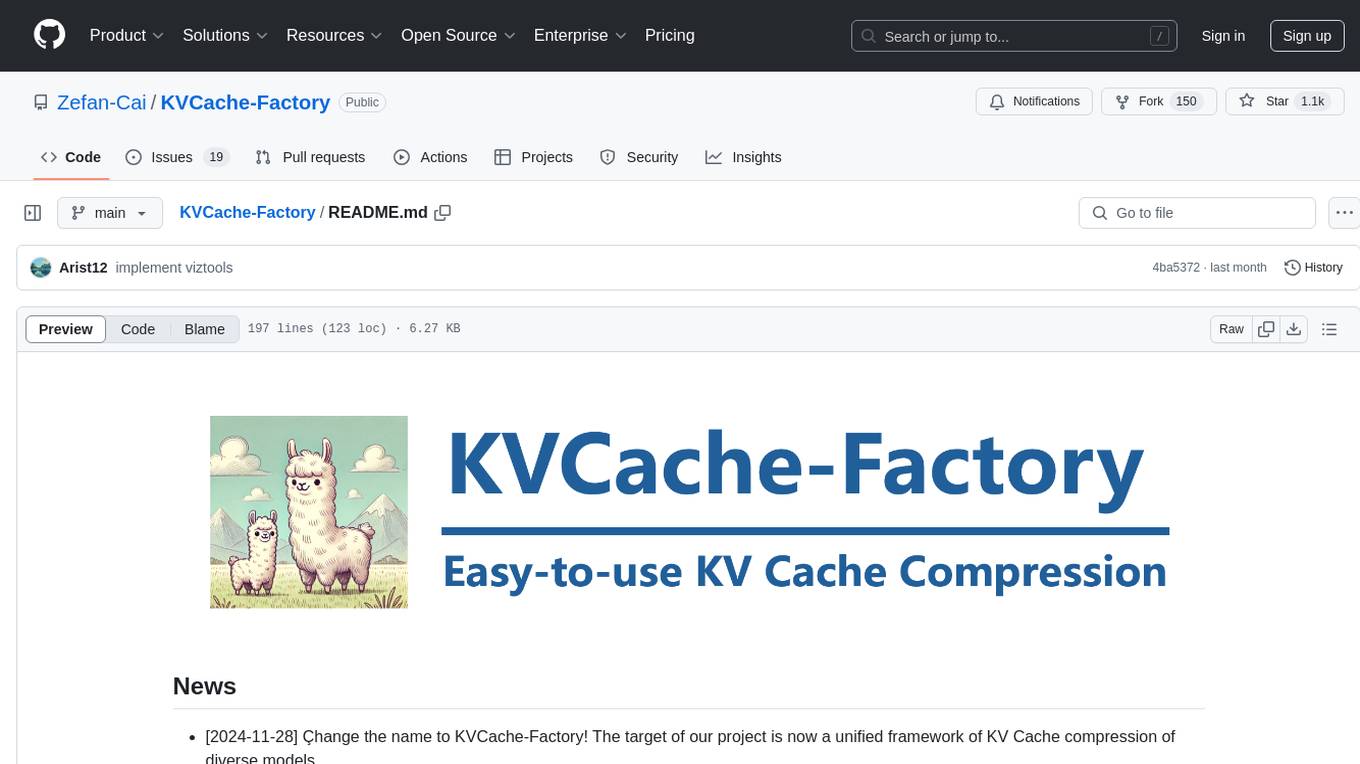
KVCache-Factory is a unified framework for KV Cache compression of diverse models. It supports multi-GPUs inference with big LLMs and various attention implementations. The tool enables KV cache compression without Flash Attention v2, multi-GPU inference, and specific models like Mistral. It also provides functions for KV cache budget allocation and batch inference. The visualization tools help in understanding the attention patterns of models.
README:
-
[2024-11-28] Çhange the name to KVCache-Factory! The target of our project is now a unified framework of KV Cache compression of diverse models.
-
[2024-06-25] Support multi-GPUs inference with big LLMs now! Try out PyramidKV on LlaMa-3-70B-Instruct!
-
[2024-06-10] Support PyramidKV, SnapKV, H2O and StreamingLLM at Flash Attention v2, Sdpa Attention now! If your devices (i.e., V100, 3090) does not support Flash Attention v2, you can set attn_implementation=sdpa to try PyramidKV at Sdpa Attention!
-
[x] Support implementation of Streaming LLM, H2O and SnapKV
-
[x] Support Mistral model
-
[x] Support implementation of Needle
-
[x] Support KV cache compression without Flash Attention v2 (i.e. Sdpa Attention) for V100
-
[x] Support multi-GPU inference for 70B LlaMa-3
-
[ ] Introduce new functions to support kv cache budget allocation (i.e., supports for percentage.)
-
[ ] Support Mixtral
-
[ ] Support Batch Inference
-
[ ] Support KV cache compression at decoding stage
The Llama model attention map with 3 documents is represented as follows:
./visualization-tools/vis.ipynb reproduces the visualization results in the paper. We provide more visualization tools under ./visualization that supports different levels of kv-cache visualization.
Model attention maps for different layers would be stored at ./attention
transformers >= 4.41
flash-attn >= 2.4.0.post1git clone https://github.com/Zefan-Cai/PyramidKV.git
cd PyramidKV
pip install -r requirements.txt .We support inference code on LongBench to repuduce our result.
Please refer to scripts/scripts_longBench/eval.sh to modify the parameters according to your requirements.
Our codebase support Flash Attention v2, Sdpa Attention, etc. The results presented in our paper in based on Flash Attention v2.
export CUDA_VISIBLE_DEVICES=$1
method=$2 # Support PyramidKV, SnapKV, H2O, StreamingLLM
max_capacity_prompts=64 # 128,2048 in paper
attn_implementation=$3 # Support "flash_attention_2", "sdpa", "eager".
source_path=$4
model_path=$5
save_dir=${source_path}"results_long_bench" # path to result save_dir
python3 run_longbench.py \
--method ${method} \
--model_path ${model_path} \
--max_capacity_prompts ${max_capacity_prompts} \
--attn_implementation ${attn_implementation} \
--save_dir ${save_dir} \
--use_cache True
- CUDA_VISIBLE_DEVICES: For multi-GPU inference for big LLMs, just need to specify CUDA_VISIBLE_DEVICES=0,1,2,3,4,5,6,7. For single GPU inference, just need to specify CUDA_VISIBLE_DEVICES=0.
- model_path: Path to your model. Support "Llama-3-8B-Instruct" for now.
- method: Support
PyramidKV,SnapKV,StreamingLLM,H2O. - max_capacity_prompts: Selected KV Size in each layer. (e.g. 128, 2048 in paper). When method is "PyramidKV", given that the total number of KV remains unchanged, the specific KV length for each layer will be modified accordingly
- save_dir: Path to your dir to save LongBench result.
After modifying parameters, run:
sh scripts/scripts_longBench/eval.sh
We support inference code on Needle in haystack to repuduce our result.
Please refer to scripts/scripts_needle/eval.sh to modify the parameters according to your requirements.
Our codebase support Flash Attention v2, Sdpa Attention, etc. The results presented in our paper in based on Flash Attention v2.
METHOD='pyramidkv' # ['full', 'pyramidkv', 'snapkv', 'streamingllm', 'h2o']
MAX_CAPACITY_PROMPT=96 # [64, 96, 128, 256, 512, 1024, 2048, ...]
attn_implementation="flash_attention_2" # Support "flash_attention_2", "sdpa", "".
TAG=test
# For Llama3-8b
(
python -u run_needle_in_haystack.py --s_len 1000 --e_len 8001\
--model_provider LLaMA3 \
--model_name /mnt/workspace/zhiyuanhu/yuliang/models/llama3-8b_raw \
--attn_implementation ${attn_implementation} \
--step 100 \
--method $METHOD \
--max_capacity_prompt $MAX_CAPACITY_PROMPT \
--model_version LlaMA3_${METHOD}_${MAX_CAPACITY_PROMPT}_${TAG}
) 2>&1 | tee results_needle/logs/LlaMA3_${METHOD}_${MAX_CAPACITY_PROMPT}_${TAG}.log
- Both LLaMA3 and Mistral2 inference support on single GPU.
- model_provider: LLaMA3 or Mistral2
- model_name: Path to your model. Support "Llama-3-8B-Instruct" "Mistral-7B-Instruct-v0.2" and for now.
- step: The increase of context length.
- method: Support
PyramidKV,SnapKV,StreamingLLM,H2O. - max_capacity_prompt: Selected KV Size in each layer. (e.g. 128, 2048 in paper). When method is "PyramidKV", given that the total number of KV remains unchanged, the specific KV length for each layer will be modified accordingly
To reproduce our results, run
bash scripts/scripts_needle/eval.sh
After inference, run
python scripts/scripts_needle/visualize.py
to draw the img, you should change FOLDER_PATH in visualize.py to your output path (the argument of --model_version in eval.sh).
If you find PyramidKV useful for your research and applications, please kindly cite using this BibTeX:
@article{cai2024pyramidkv,
title={Pyramidkv: Dynamic kv cache compression based on pyramidal information funneling},
author={Cai, Zefan and Zhang, Yichi and Gao, Bofei and Liu, Yuliang and Liu, Tianyu and Lu, Keming and Xiong, Wayne and Dong, Yue and Chang, Baobao and Hu, Junjie and Xiao Wen},
journal={arXiv preprint arXiv:2406.02069},
year={2024}
}@article{fu2024not,
title={Not All Heads Matter: A Head-Level KV Cache Compression Method with Integrated Retrieval and Reasoning},
author={Fu, Yu and Cai, Zefan and Asi, Abedelkadir and Xiong, Wayne and Dong, Yue and Xiao, Wen},
journal={arXiv preprint arXiv:2410.19258},
year={2024}
}Thanks [SnapKV] SnapKV: LLM Knows What You are Looking for Before Generation for providing open-source code to support the expansion of this project.
For Tasks:
Click tags to check more tools for each tasksFor Jobs:
Alternative AI tools for KVCache-Factory
Similar Open Source Tools

KVCache-Factory
KVCache-Factory is a unified framework for KV Cache compression of diverse models. It supports multi-GPUs inference with big LLMs and various attention implementations. The tool enables KV cache compression without Flash Attention v2, multi-GPU inference, and specific models like Mistral. It also provides functions for KV cache budget allocation and batch inference. The visualization tools help in understanding the attention patterns of models.
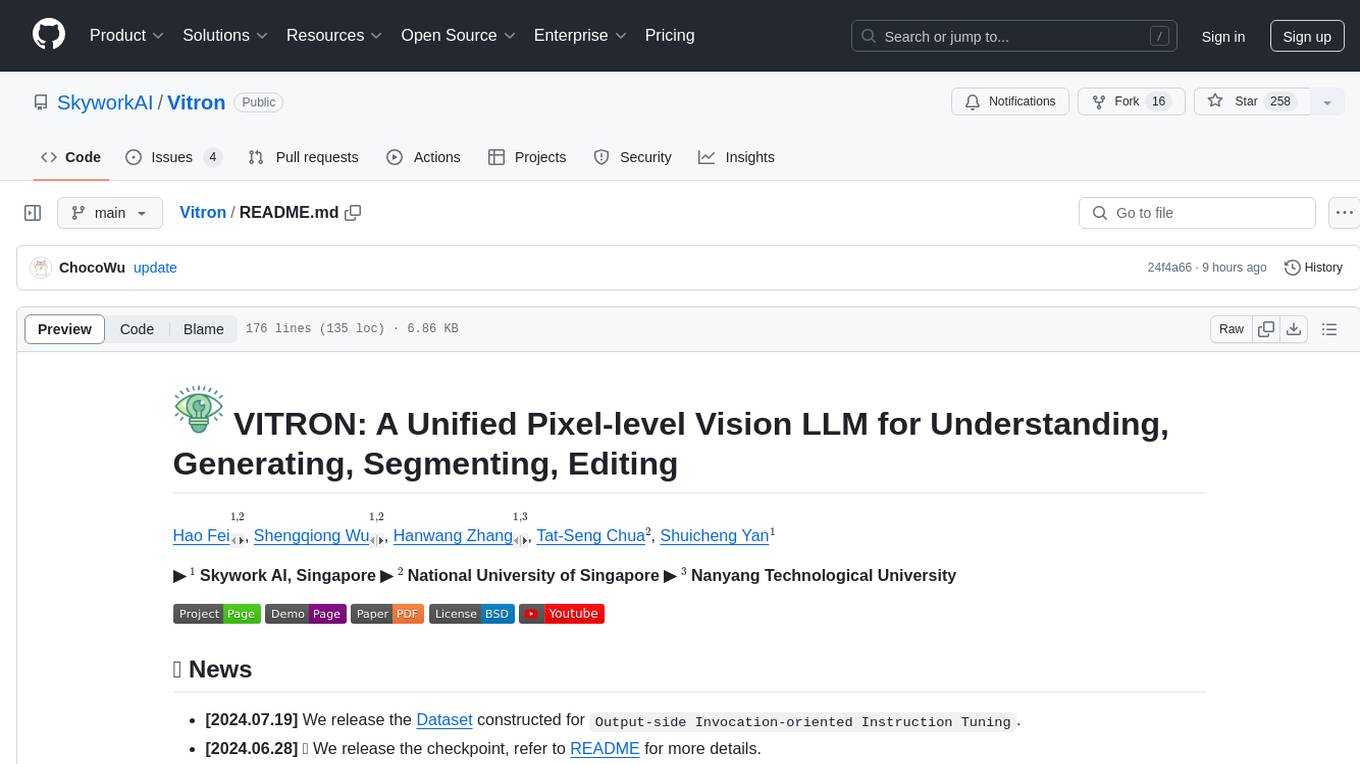
Vitron
Vitron is a unified pixel-level vision LLM designed for comprehensive understanding, generating, segmenting, and editing static images and dynamic videos. It addresses challenges in existing vision LLMs such as superficial instance-level understanding, lack of unified support for images and videos, and insufficient coverage across various vision tasks. The tool requires Python >= 3.8, Pytorch == 2.1.0, and CUDA Version >= 11.8 for installation. Users can deploy Gradio demo locally and fine-tune their models for specific tasks.
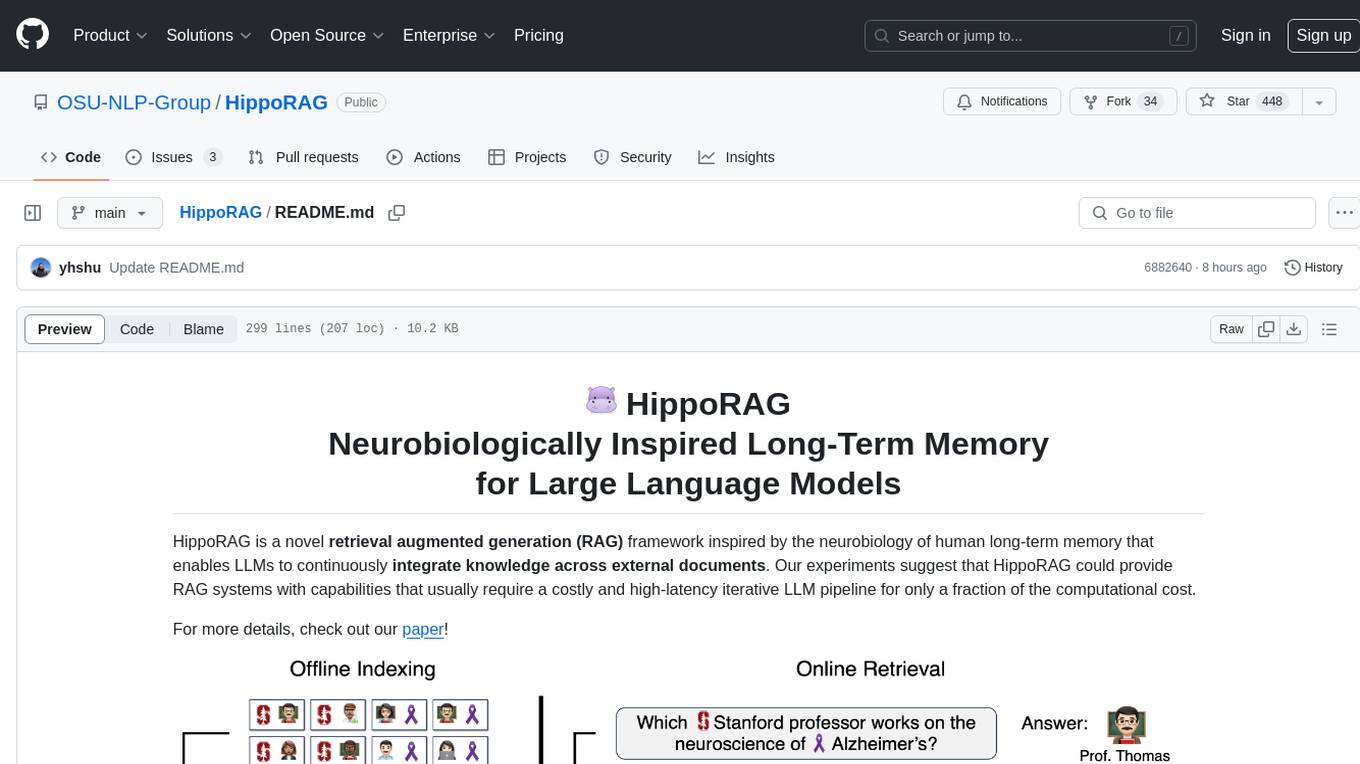
HippoRAG
HippoRAG is a novel retrieval augmented generation (RAG) framework inspired by the neurobiology of human long-term memory that enables Large Language Models (LLMs) to continuously integrate knowledge across external documents. It provides RAG systems with capabilities that usually require a costly and high-latency iterative LLM pipeline for only a fraction of the computational cost. The tool facilitates setting up retrieval corpus, indexing, and retrieval processes for LLMs, offering flexibility in choosing different online LLM APIs or offline LLM deployments through LangChain integration. Users can run retrieval on pre-defined queries or integrate directly with the HippoRAG API. The tool also supports reproducibility of experiments and provides data, baselines, and hyperparameter tuning scripts for research purposes.
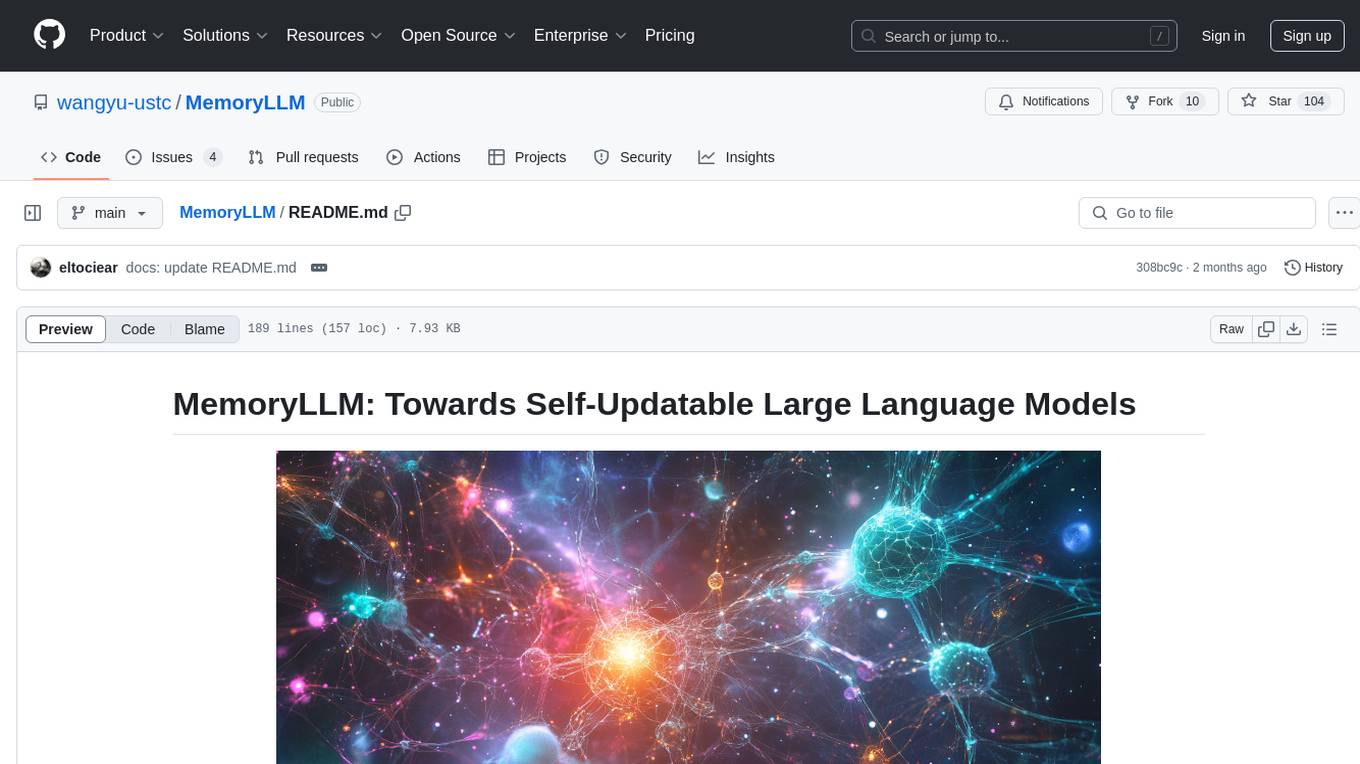
MemoryLLM
MemoryLLM is a large language model designed for self-updating capabilities. It offers pretrained models with different memory capacities and features, such as chat models. The repository provides training code, evaluation scripts, and datasets for custom experiments. MemoryLLM aims to enhance knowledge retention and performance on various natural language processing tasks.
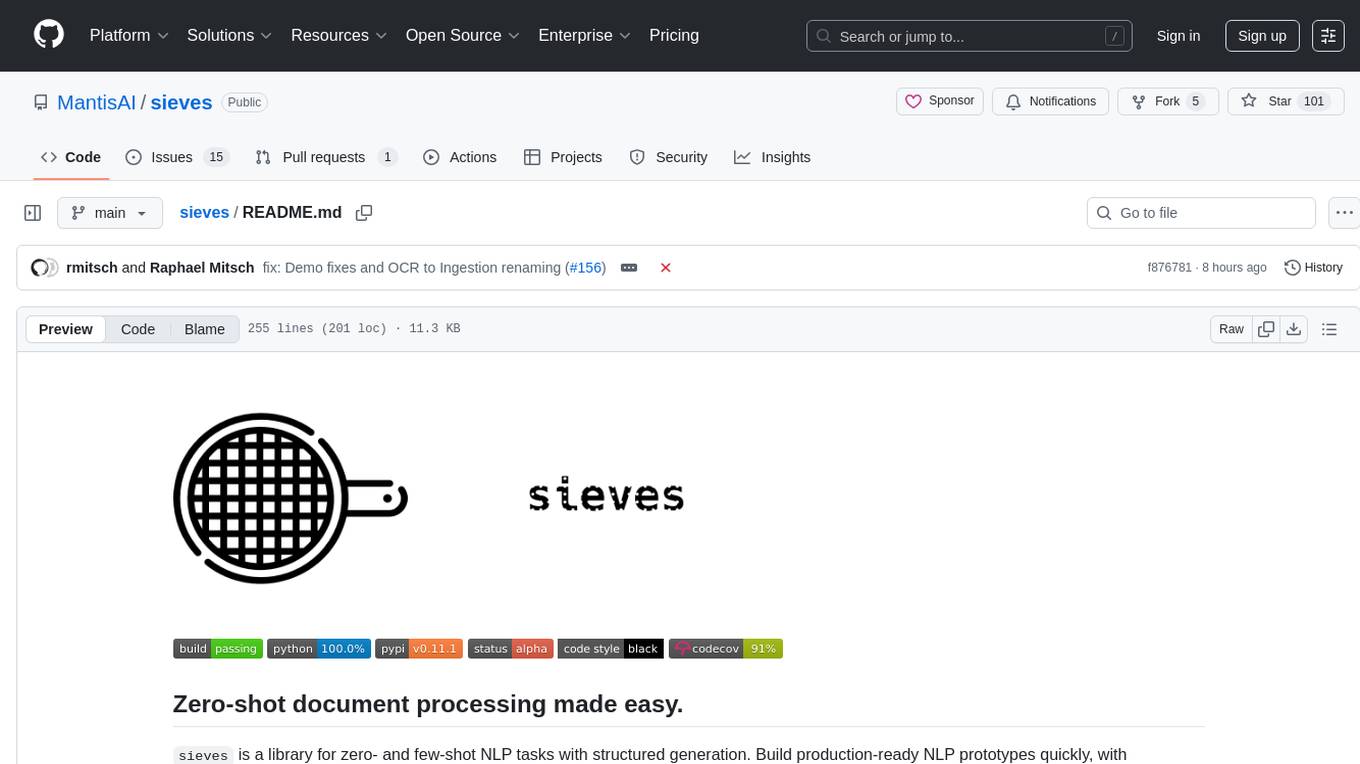
sieves
sieves is a library for zero- and few-shot NLP tasks with structured generation, enabling rapid prototyping of NLP applications without the need for training. It simplifies NLP prototyping by bundling capabilities into a single library, providing zero- and few-shot model support, a unified interface for structured generation, built-in tasks for common NLP operations, easy extendability, document-based pipeline architecture, caching to prevent redundant model calls, and more. The tool draws inspiration from spaCy and spacy-llm, offering features like immediate inference, observable pipelines, integrated tools for document parsing and text chunking, ready-to-use tasks such as classification, summarization, translation, and more, persistence for saving and loading pipelines, distillation for specialized model creation, and caching to optimize performance.
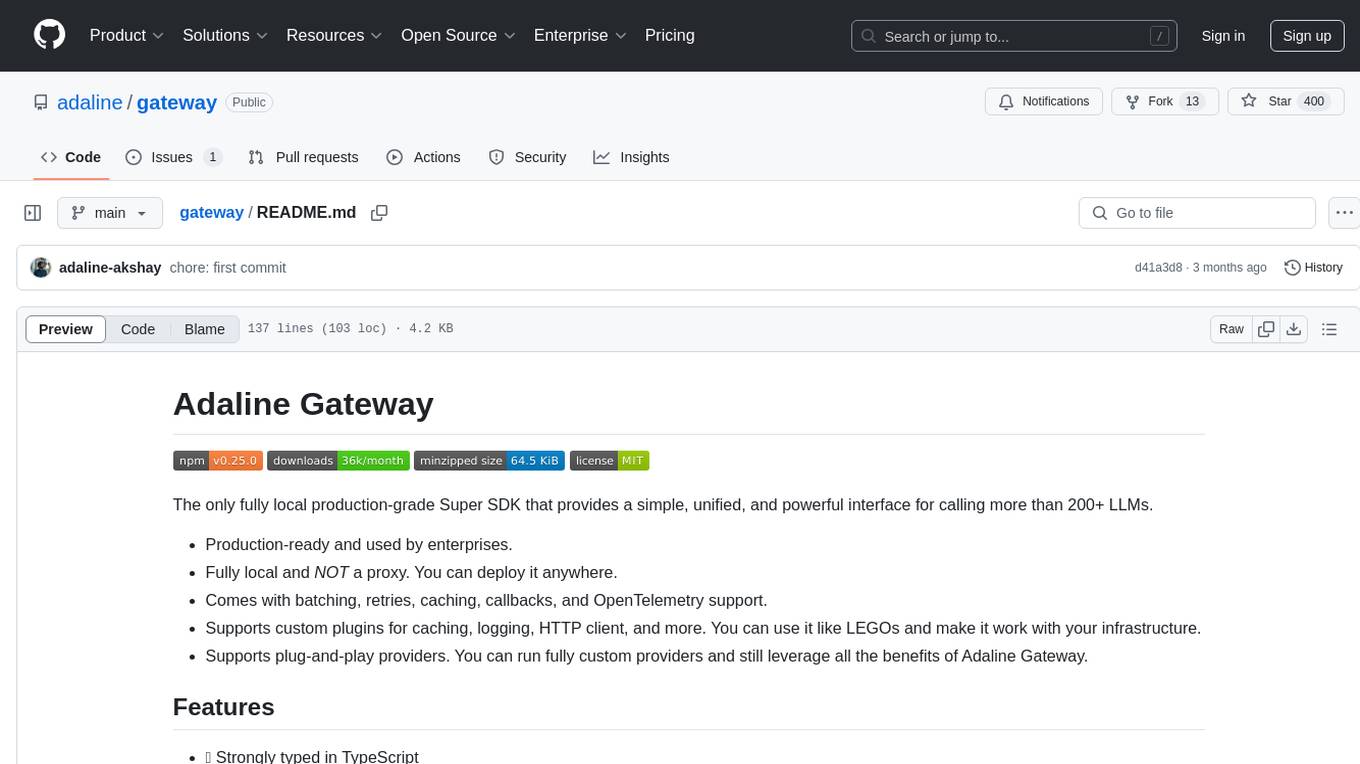
gateway
Adaline Gateway is a fully local production-grade Super SDK that offers a unified interface for calling over 200+ LLMs. It is production-ready, supports batching, retries, caching, callbacks, and OpenTelemetry. Users can create custom plugins and providers for seamless integration with their infrastructure.
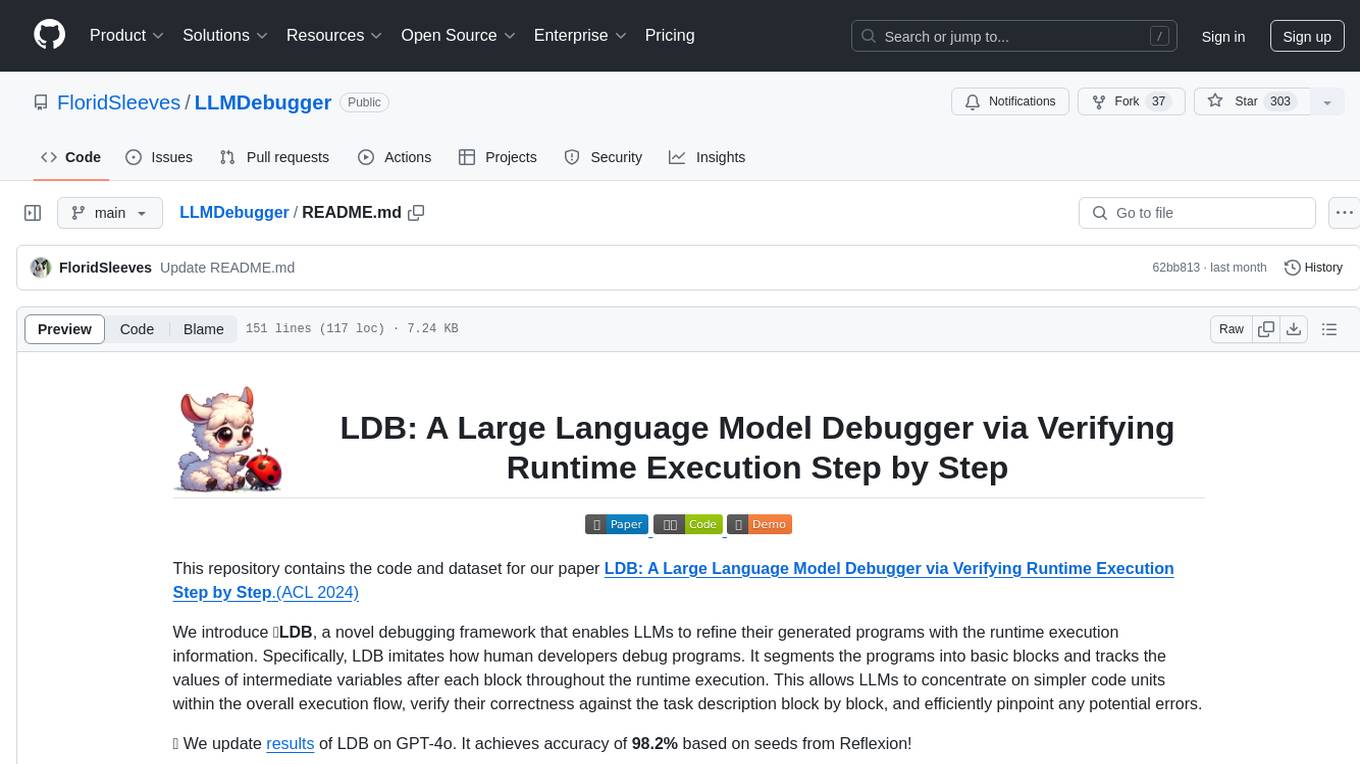
LLMDebugger
This repository contains the code and dataset for LDB, a novel debugging framework that enables Large Language Models (LLMs) to refine their generated programs by tracking the values of intermediate variables throughout the runtime execution. LDB segments programs into basic blocks, allowing LLMs to concentrate on simpler code units, verify correctness block by block, and pinpoint errors efficiently. The tool provides APIs for debugging and generating code with debugging messages, mimicking how human developers debug programs.
Pixel-Reasoner
Pixel Reasoner is a framework that introduces reasoning in the pixel-space for Vision-Language Models (VLMs), enabling them to directly inspect, interrogate, and infer from visual evidences. This enhances reasoning fidelity for visual tasks by equipping VLMs with visual reasoning operations like zoom-in and select-frame. The framework addresses challenges like model's imbalanced competence and reluctance to adopt pixel-space operations through a two-phase training approach involving instruction tuning and curiosity-driven reinforcement learning. With these visual operations, VLMs can interact with complex visual inputs such as images or videos to gather necessary information, leading to improved performance across visual reasoning benchmarks.
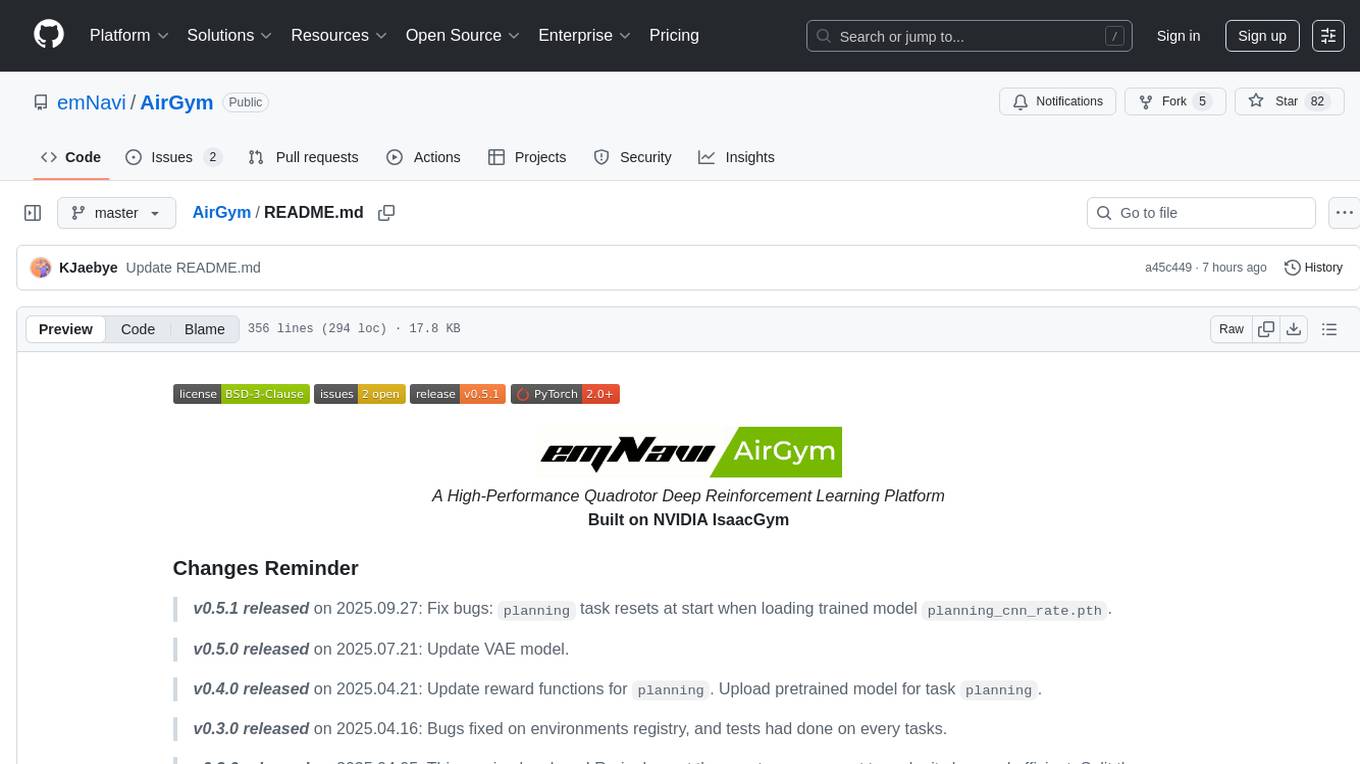
AirGym
AirGym is an open source Python quadrotor simulator based on IsaacGym, providing a high-fidelity dynamics and Deep Reinforcement Learning (DRL) framework for quadrotor robot learning research. It offers a lightweight and customizable platform with strict alignment with PX4 logic, multiple control modes, and Sim-to-Real toolkits. Users can perform tasks such as Hovering, Balloon, Tracking, Avoid, and Planning, with the ability to create customized environments and tasks. The tool also supports training from scratch, visual encoding approaches, playing and testing of trained models, and customization of new tasks and assets.
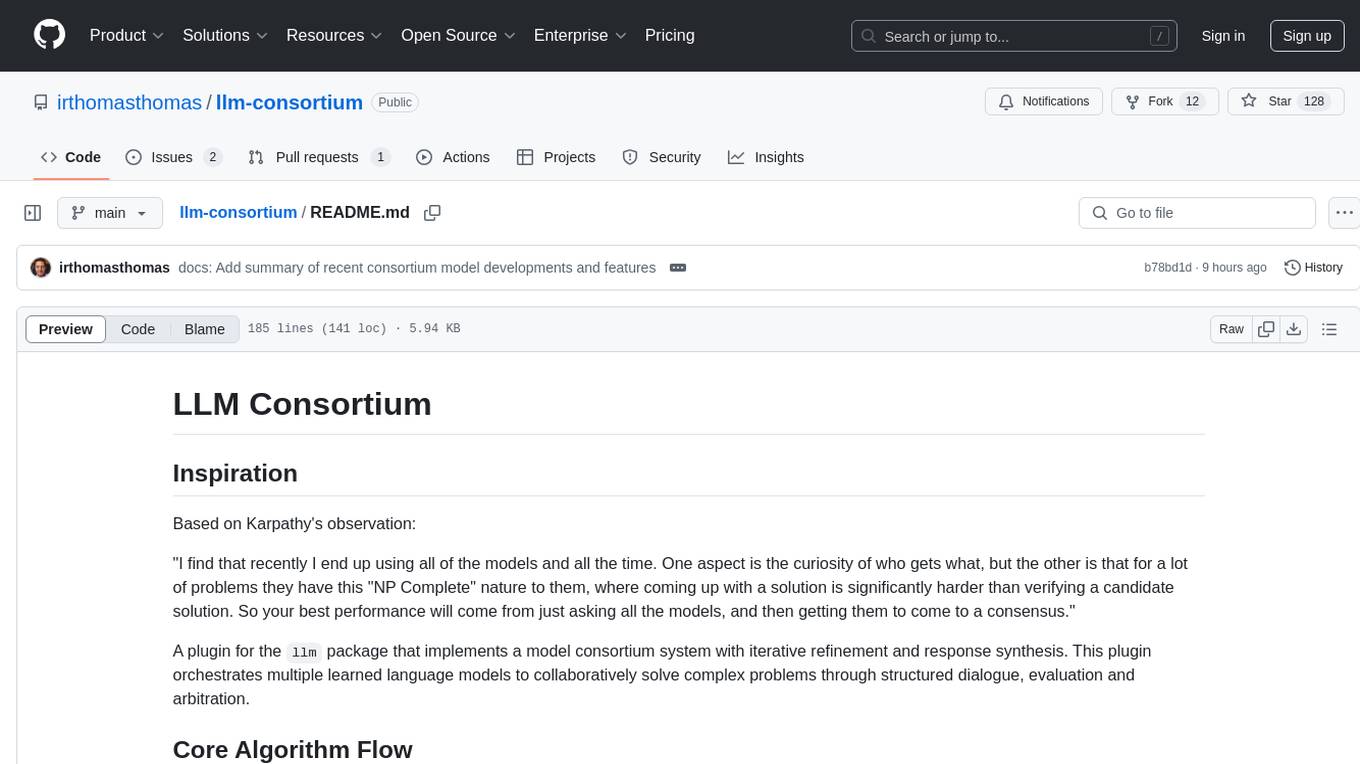
llm-consortium
LLM Consortium is a plugin for the `llm` package that implements a model consortium system with iterative refinement and response synthesis. It orchestrates multiple learned language models to collaboratively solve complex problems through structured dialogue, evaluation, and arbitration. The tool supports multi-model orchestration, iterative refinement, advanced arbitration, database logging, configurable parameters, hundreds of models, and the ability to save and load consortium configurations.
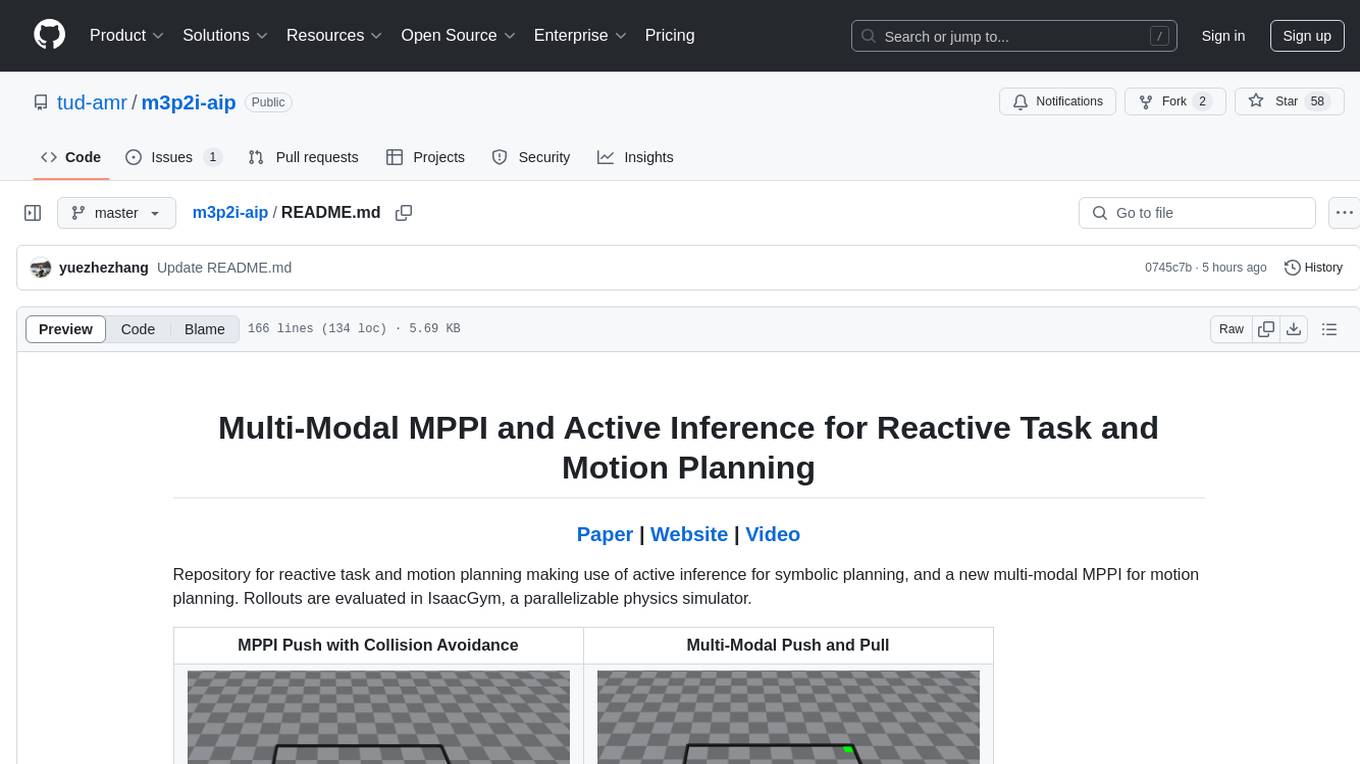
m3p2i-aip
Repository for reactive task and motion planning using active inference for symbolic planning and multi-modal MPPI for motion planning. Rollouts are evaluated in IsaacGym, a parallelizable physics simulator. The tool provides functionalities for push, pull, pick, and multi-modal push-pull tasks with collision avoidance.
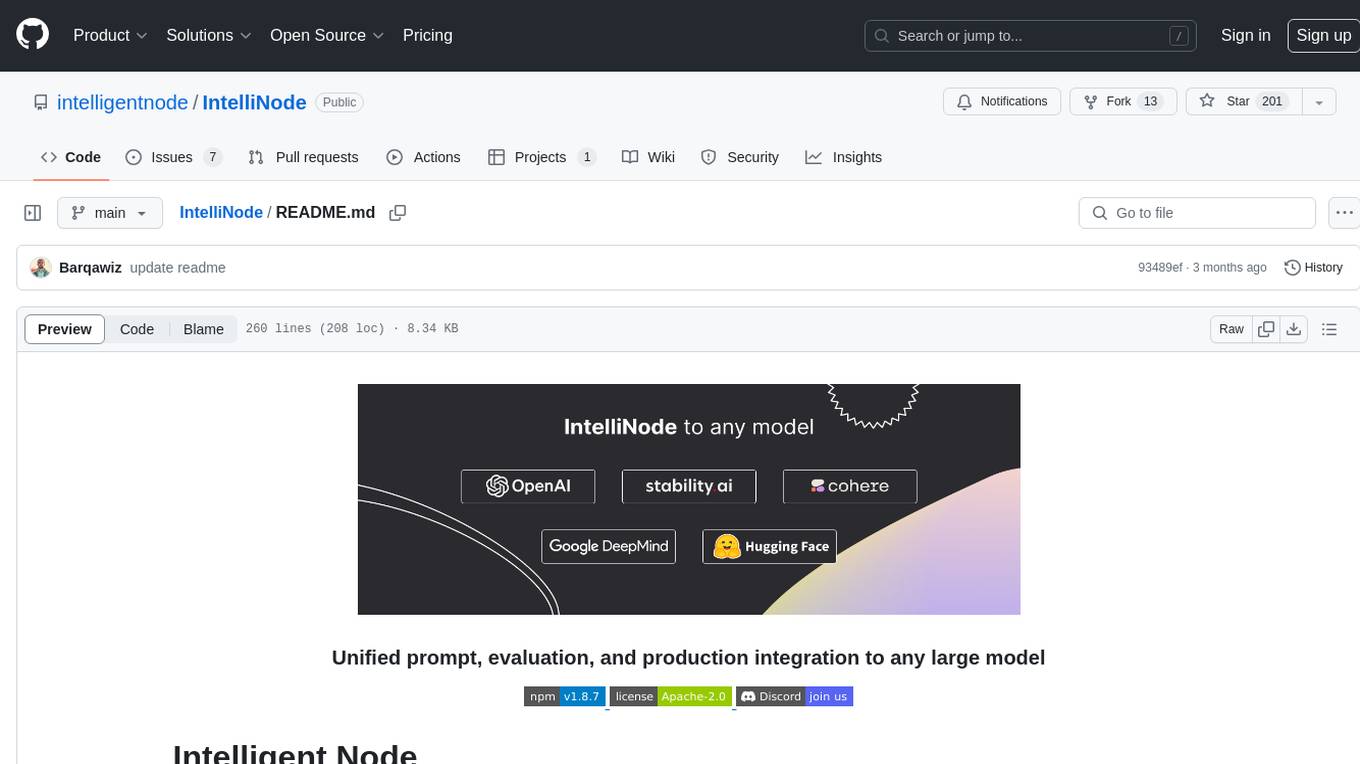
IntelliNode
IntelliNode is a javascript module that integrates cutting-edge AI models like ChatGPT, LLaMA, WaveNet, Gemini, and Stable diffusion into projects. It offers functions for generating text, speech, and images, as well as semantic search, multi-model evaluation, and chatbot capabilities. The module provides a wrapper layer for low-level model access, a controller layer for unified input handling, and a function layer for abstract functionality tailored to various use cases.
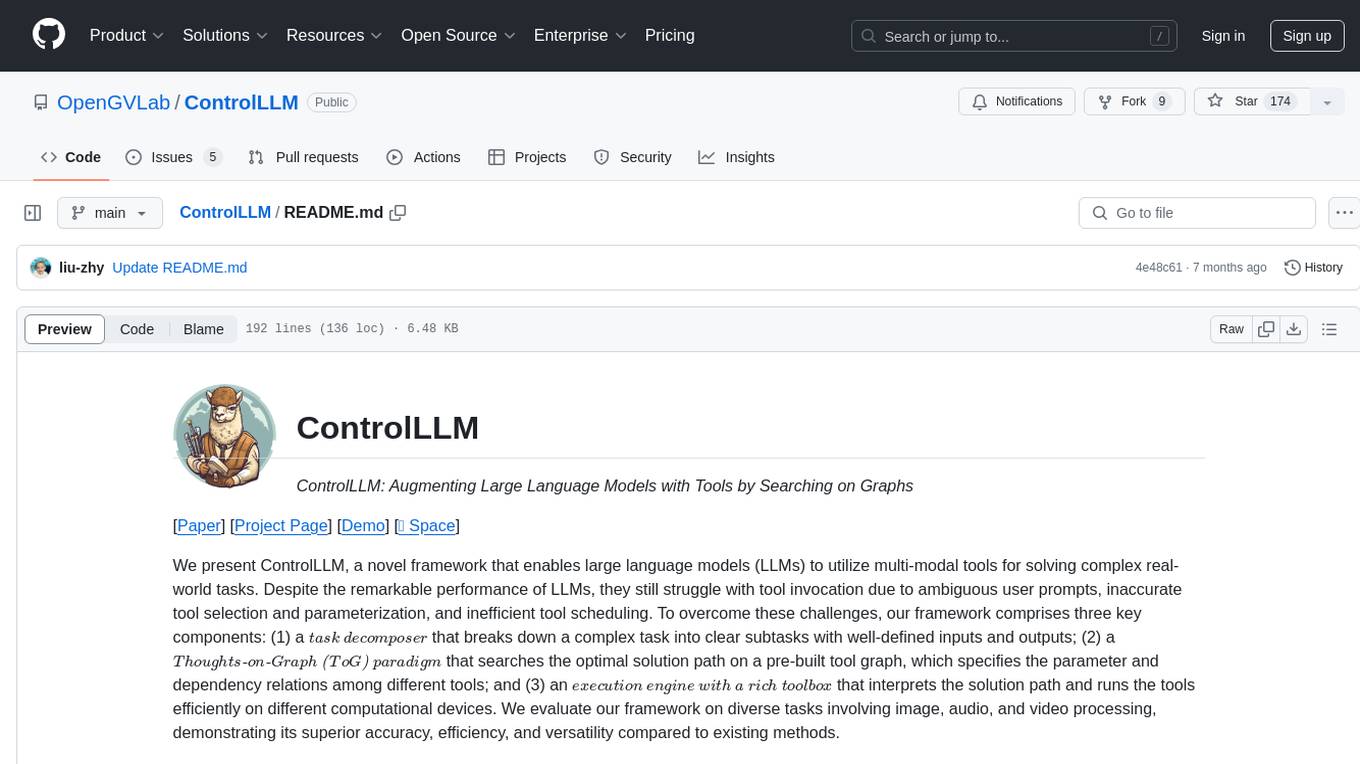
ControlLLM
ControlLLM is a framework that empowers large language models to leverage multi-modal tools for solving complex real-world tasks. It addresses challenges like ambiguous user prompts, inaccurate tool selection, and inefficient tool scheduling by utilizing a task decomposer, a Thoughts-on-Graph paradigm, and an execution engine with a rich toolbox. The framework excels in tasks involving image, audio, and video processing, showcasing superior accuracy, efficiency, and versatility compared to existing methods.
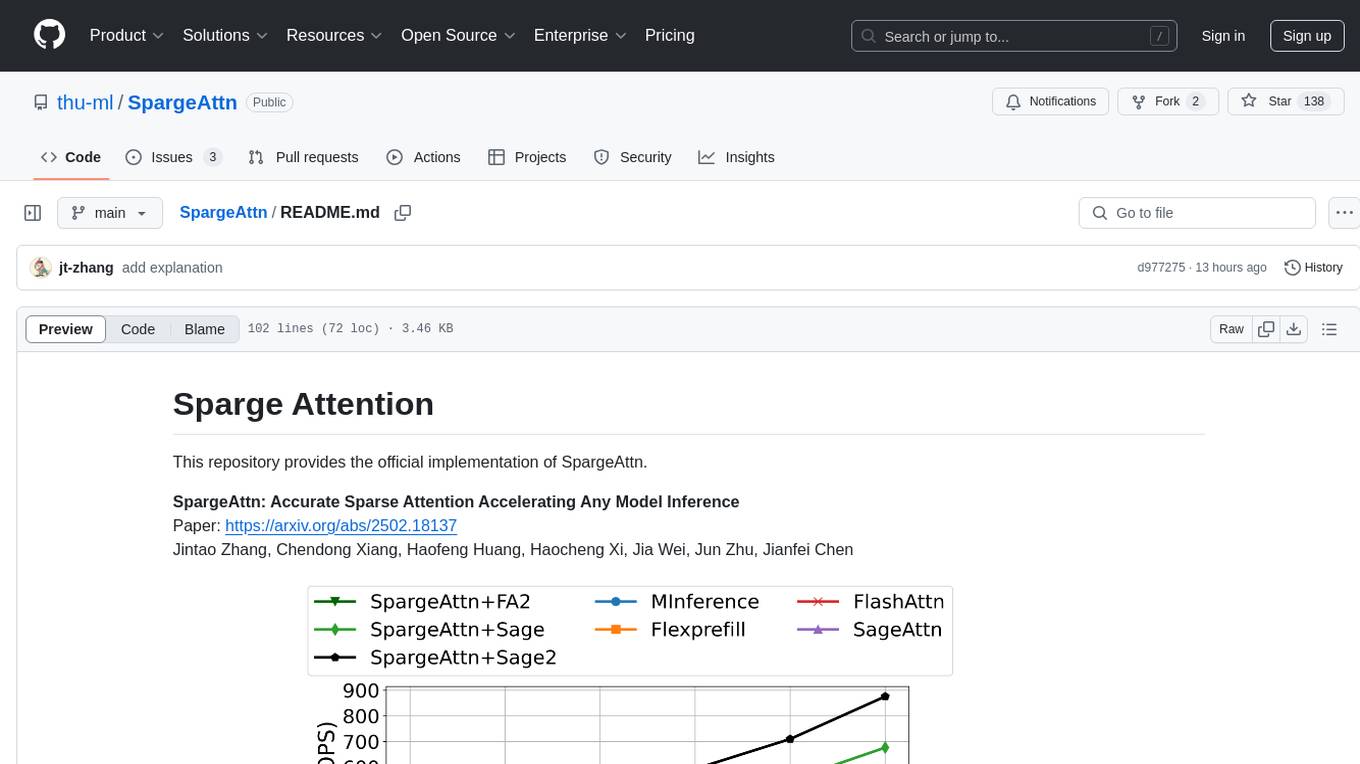
SpargeAttn
SpargeAttn is an official implementation designed for accelerating any model inference by providing accurate sparse attention. It offers a significant speedup in model performance while maintaining quality. The tool is based on SageAttention and SageAttention2, providing options for different levels of optimization. Users can easily install the package and utilize the available APIs for their specific needs. SpargeAttn is particularly useful for tasks requiring efficient attention mechanisms in deep learning models.

shellChatGPT
ShellChatGPT is a shell wrapper for OpenAI's ChatGPT, DALL-E, Whisper, and TTS, featuring integration with LocalAI, Ollama, Gemini, Mistral, Groq, and GitHub Models. It provides text and chat completions, vision, reasoning, and audio models, voice-in and voice-out chatting mode, text editor interface, markdown rendering support, session management, instruction prompt manager, integration with various service providers, command line completion, file picker dialogs, color scheme personalization, stdin and text file input support, and compatibility with Linux, FreeBSD, MacOS, and Termux for a responsive experience.

req_llm
ReqLLM is a Req-based library for LLM interactions, offering a unified interface to AI providers through a plugin-based architecture. It brings composability and middleware advantages to LLM interactions, with features like auto-synced providers/models, typed data structures, ergonomic helpers, streaming capabilities, usage & cost extraction, and a plugin-based provider system. Users can easily generate text, structured data, embeddings, and track usage costs. The tool supports various AI providers like Anthropic, OpenAI, Groq, Google, and xAI, and allows for easy addition of new providers. ReqLLM also provides API key management, detailed documentation, and a roadmap for future enhancements.
For similar tasks

KVCache-Factory
KVCache-Factory is a unified framework for KV Cache compression of diverse models. It supports multi-GPUs inference with big LLMs and various attention implementations. The tool enables KV cache compression without Flash Attention v2, multi-GPU inference, and specific models like Mistral. It also provides functions for KV cache budget allocation and batch inference. The visualization tools help in understanding the attention patterns of models.
For similar jobs

sweep
Sweep is an AI junior developer that turns bugs and feature requests into code changes. It automatically handles developer experience improvements like adding type hints and improving test coverage.

teams-ai
The Teams AI Library is a software development kit (SDK) that helps developers create bots that can interact with Teams and Microsoft 365 applications. It is built on top of the Bot Framework SDK and simplifies the process of developing bots that interact with Teams' artificial intelligence capabilities. The SDK is available for JavaScript/TypeScript, .NET, and Python.

ai-guide
This guide is dedicated to Large Language Models (LLMs) that you can run on your home computer. It assumes your PC is a lower-end, non-gaming setup.

classifai
Supercharge WordPress Content Workflows and Engagement with Artificial Intelligence. Tap into leading cloud-based services like OpenAI, Microsoft Azure AI, Google Gemini and IBM Watson to augment your WordPress-powered websites. Publish content faster while improving SEO performance and increasing audience engagement. ClassifAI integrates Artificial Intelligence and Machine Learning technologies to lighten your workload and eliminate tedious tasks, giving you more time to create original content that matters.

chatbot-ui
Chatbot UI is an open-source AI chat app that allows users to create and deploy their own AI chatbots. It is easy to use and can be customized to fit any need. Chatbot UI is perfect for businesses, developers, and anyone who wants to create a chatbot.

BricksLLM
BricksLLM is a cloud native AI gateway written in Go. Currently, it provides native support for OpenAI, Anthropic, Azure OpenAI and vLLM. BricksLLM aims to provide enterprise level infrastructure that can power any LLM production use cases. Here are some use cases for BricksLLM: * Set LLM usage limits for users on different pricing tiers * Track LLM usage on a per user and per organization basis * Block or redact requests containing PIIs * Improve LLM reliability with failovers, retries and caching * Distribute API keys with rate limits and cost limits for internal development/production use cases * Distribute API keys with rate limits and cost limits for students

uAgents
uAgents is a Python library developed by Fetch.ai that allows for the creation of autonomous AI agents. These agents can perform various tasks on a schedule or take action on various events. uAgents are easy to create and manage, and they are connected to a fast-growing network of other uAgents. They are also secure, with cryptographically secured messages and wallets.

griptape
Griptape is a modular Python framework for building AI-powered applications that securely connect to your enterprise data and APIs. It offers developers the ability to maintain control and flexibility at every step. Griptape's core components include Structures (Agents, Pipelines, and Workflows), Tasks, Tools, Memory (Conversation Memory, Task Memory, and Meta Memory), Drivers (Prompt and Embedding Drivers, Vector Store Drivers, Image Generation Drivers, Image Query Drivers, SQL Drivers, Web Scraper Drivers, and Conversation Memory Drivers), Engines (Query Engines, Extraction Engines, Summary Engines, Image Generation Engines, and Image Query Engines), and additional components (Rulesets, Loaders, Artifacts, Chunkers, and Tokenizers). Griptape enables developers to create AI-powered applications with ease and efficiency.



